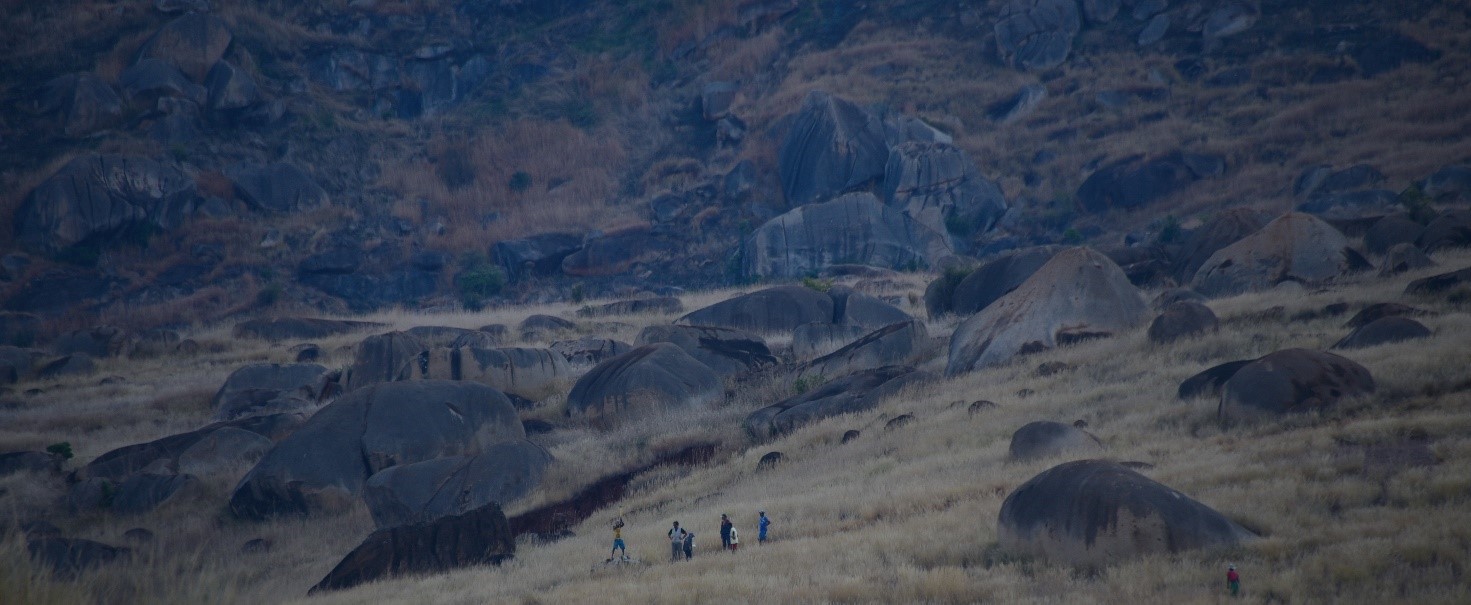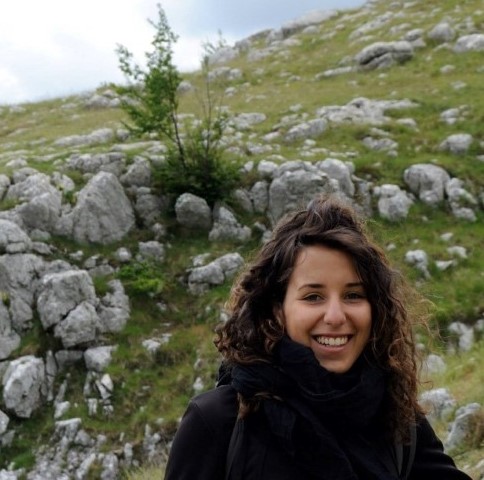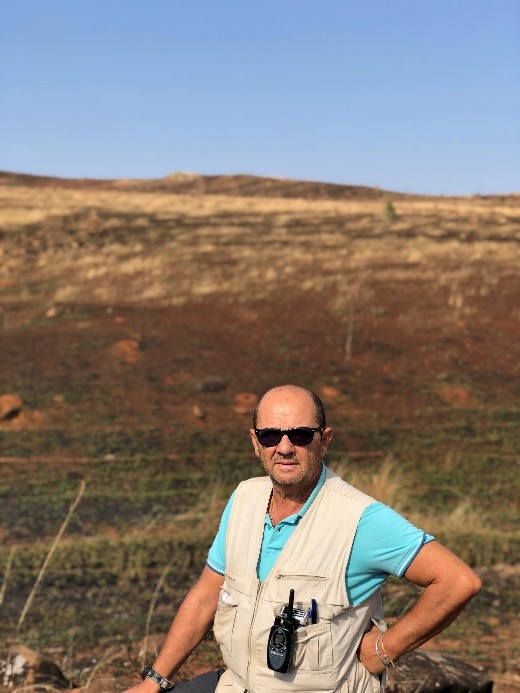RU Napoli
| Home | Ferrara RU | Pavia RU | Modena RU | Padova RU | Napoli RU | Firenze RU |
|---|
 |
|---|
Research unit of Napoli
Aims
The RU of Napoli is involved in the study of the genesis and differentiation processes of igneous effusive, intrusive and mantle rocks using mineralogical, petrographic and geochemical (major and trace elements and isotopic systematic Sr-Nd-Pb-O-Hf-Os on bulk-rock and/or mineralogical phases), geochronological techniques (radiometric dating with 40Ar/39Ar, U-Pb methods) and in the subsequent modeling of evolution processes and mantle sources.
The rocks studied range from tholeiitic to calc-alkaline (s.l.) to alkaline (from weakly to strongly undersaturated in silica included ultrapotassic, melilitic, carbonatitic and kimberlitic rock types), as well as the ultramafic mantle xenoliths often associated with the mafic alkaline rocks. The areas studied are: Campi Flegrei, Ischia, Somma-Vesuvio, Sardinia, Monte Vulture, Roccamonfina, Colli Albani, Pontine Islands, , continental flood basalts associated with the fragmentation of Gondwana (Madagascar, Deccan Traps in India, Antarctica, Paraná, Angola, Mozambique), the intrusive and effusive alkaline products of continental areas (Brazil, India, Madagascar) and the products of African magmatism (Rift of Ethiopia, Rift del Congo, Cameroon).
In this reaserch project, the RU of Napoli will focus on the Large Igneous Province of Madagascar. It is one of the largest magmatic events in the Late Cretaceous. Remnants of this igneous province crop out along the rifted margin of the eastern coast, in the Mahajanga and Morondava basins of western Madagascar and directly above the Precambrian basement and comprise lava flows, dykes, sills and intrusive complexes
The origin of Madagascar LIP is postulated to be linked to both Madagascar-Greater India rifting and the Marion plume. The available age determinations indicate a time span of about 8 Ma for the emplacement of the LIP (92-84 Ma) with the youngest products located to the south.
This implies the following: a) the bulk of the LIP is slightly older than the first known oceanic crust of Mascarene basin (83.6 Ma); b) this age range is very close to a well-known oceanic anoxic excursion (OAE-2; 93 Ma) associated with significant climate change and as recorded in pelagic sediments and tephra (Erba, 2004; Kuroda et al., 2007), thus suggesting some link between the two geological features. Furthermore, intrusive rocks of southern India have radioisotopic ages of ~90-85 Ma (Pande et al., 2001; Torsvik et al., 2000), thus suggesting a link between the two volcanic areas.
The studies of the volcanic rocks of Madagascar (Melluso et al., 1997, 2001, 2002, 2003; Cucciniello et al., 2013, 2010) highlight the peculiar chemical and isotopic compositions of these rocks. These are mainly mafic tholeiitic rocks, with lower amounts of more evolved dacites and rhyolites, these latter mainly formed after open system fractional crystallization of basalt parents (Cucciniello et al., 2010; Melluso et al., 2001). Silicic rocks form large plateaus in the eastern coast (Melluso et al., 2009). Alkaline rocks are subordinate, and mostly in the form of dykes or rare intrusive complexes (Antampombato-Ambatovy), a few ferrobasaltic lavas in the east (Storey et al., 1997) and in the Ejeda-Bekily dyke swarm. Peralkaline silicic rocks are known at the Androy complex (Mahoney et al., 2008) and Antampombato (Melluso et al., 2005). The rocks are substantially devoid of hydrous minerals, these latter being present only in a few intrusive rocks.
In this framework, the geochemical and isotopic variations of the mafic rocks evidence the extreme heterogeneity of the feeding systems from typical MORB composition found in dykes of western coast (Melluso et al., 2001, 2003), and compositions clearly the result of important interaction with continental crust or lithospheric mantle (NW Madagascar basalts, Androy, Ejeda-Bekily swarm; Cucciniello et al., 2013; Mahoney et al., 1991; Storey et al., 1997). The consequence of this geochemical and isotopic heterogeneity is the lack of reliable indications of mantle sources different from those forming MORB. Evidence of the hot-spot hypothesis should be seen in the track of volcanic islands, of which the most recent is the Marion-Prince Edward archipelago in the southern Indian Ocean. Deep mantle sources should have characteristic isotopic signatures, to be observed in the magmas, but no trace of deep source signatures are seen in the Madagascan basalts. Even primitive mafic rocks erupted very close to the presumed position of the hotspot at 88 Ma only show geochemical characteristics typical of lithospheric mantle or even the crust (Mahoney et al., 2008; Storey et al., 1997).
The aim of the project is to constrain the age and duration of magmatic activity; 2) the composition and origin of mantle source; 3) the relationship between Madagascar LIP and oceanic anoxic events, climate change and mass extinctions.
People
|
|
Dr. Ciro Cucciniello |
|---|---|
|
|
Prof. Leone Melluso |
 |
Dr. Luigi Franciosi |
Collaborators
|
|
Prof. Vincenzo Morra |
|---|---|
|
|
Dr. Celestino Grifa |
Students involved
(list of thesis)
 |
Mara Liguori
Thesis: Petrologia del complesso intrusivo di Ambohiby, Madagascar |
|---|
Facilities/skills of the RU
The laboratories of Dipartimento di Scienze della Terra, dell’Ambiente e delle Risorse (DiSTAR) dell’Università di Napoli are equipped with two Scanning Electron Microscopy / Energy Dispersive X-Ray Spectroscopy (SEM/EDS), a thermal ionization mass spectrometer Triton Plus - Thermo Fisher Scientific, and an Axios Panalytical XRF. In addition, the DiSTAR has a laboratory for thin section and sample preparation, and a clean lab class 1000 for isotopic sample preparation.
Results/publications/abstract
PUBLICATIONS
1) Patel, V., Sheth, H., Cucciniello, C*., Joshi, G.W., Wegner, W., Samant, H., Sen, B., Koeberl, C. 2020. Geochemistry of Deccan Tholeiite Flows and Dykes of Elephanta Island: Insights into the Stratigraphy and Structure of the Panvel Flexure Zone, Western Indian Rifted Margin. Geosciences 10, 118, doi:10.3390/geosciences10040118.
2) Arienzo, I., Liotta, M., Brusca, L., D’Antonio, M., Lupone, F., Cucciniello, C. 2020. Analytical Method for Lithium Isotopes Determination by Thermal Ionization Mass Spectrometry: A Useful Tool for Hydrogeochemical Applications. Water 12 (8), 2182, doi:10.3390/w12082182.
3) Cucciniello, C*., Sheth, H., Duraiswami, R.A., Wegner, W., Koeberl, C., Das, T., Ghule, V. 2020. The Southeastern Saurashtra dyke swarm, Deccan Traps: Magmatic evolution of a tholeiitic basalt–basaltic andesite–andesite–rhyolite suite. Lithos 376-377, https://doi.org/10.1016/j.lithos.2020.105759
4) Cucciniello, C*., Morra, V., Melluso, L., Jourdan, F. 2021. Constraints on duration, age and migration of the feeder systems of the Madagascan Flood Basalt Province from high-precision 40Ar/39Ar chronology. In Srivastava, R.K., Ernst, R.E., Buchan, K..L. De Kock, M. (Eds), Large Igneous Provinces and their Plumbing Systems. Geological Society, London, Special Publications, 518, https://doi.org/10.1144/SP518-2020-275
5) Mazzeo, F.C., Rocco, I., Tucker, R.D., Morra, V., D'Antonio, M., Melluso, L*. 2020. Olivine melilitites, mantle xenoliths, and xenocrysts of the Takarindiona district: Petrogenesis, magmatic evolution, and the sub-continental lithospheric mantle of east-central Madagascar. Journal of African Earth Sciences,104059, https://doi.org/10.1016/j.jafrearsci.2020.104059
6) Melluso, L*., Sethna, S.F., Srivastava, R.K. 2021. First occurrence of melilite, potassic richterite and tetraferriphlogopite in Deccan Trap-related alkaline rocks, and its petrogenetic significance: The Rajpuri ijolite-nephelinite intrusion, Murud, Mumbai area, India. Neues Jahrbuch für Mineralogie - Abhandlungen (Journal of Mineralogy and Geochemistry) 197/1, 49-64, DOI: 10.1127/njma/2020/0236
7) Guarino, V., Lustrino, M., Zanetti, A., Tassinari, C.C.G., Ruberti, E., de' Gennaro, R., Melluso, L.* 2021. Mineralogy and geochemistry of a giant agpaitic magma reservoir: The Late Cretaceous Poços de Caldas potassic alkaline complex (SE Brazil). Lithos 398-399, 106333, https://doi.org/10.1016/j.lithos.2021.106330





